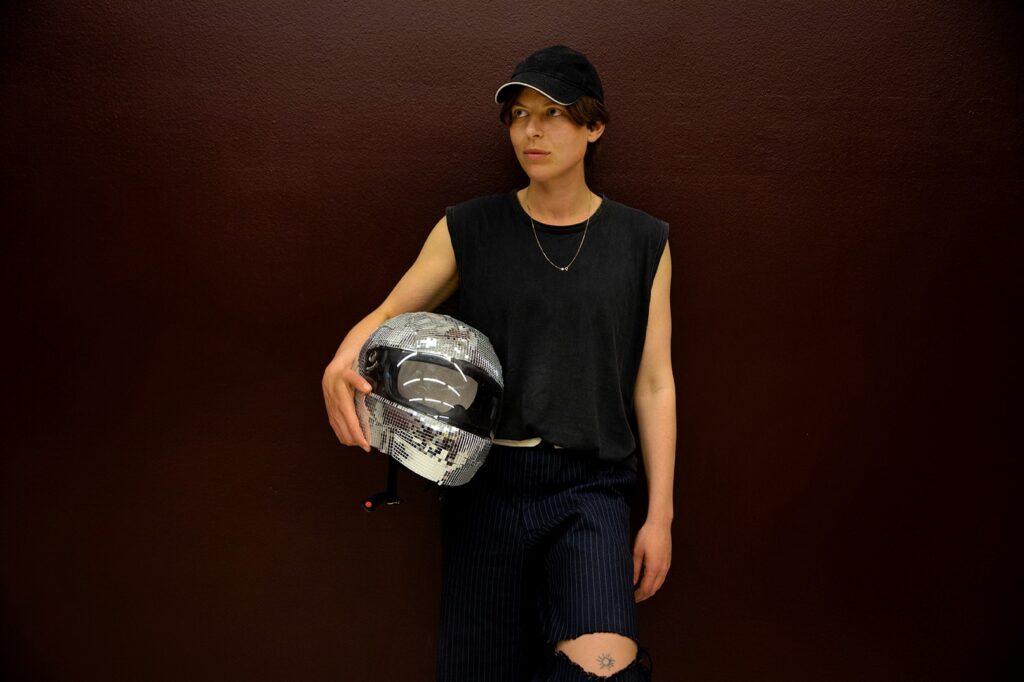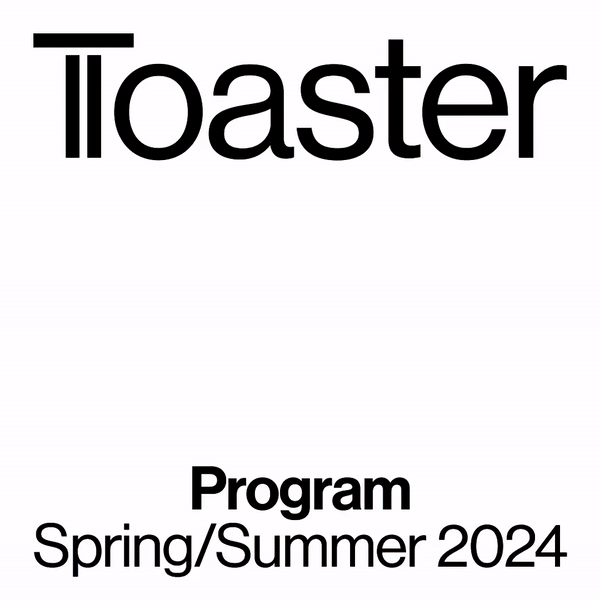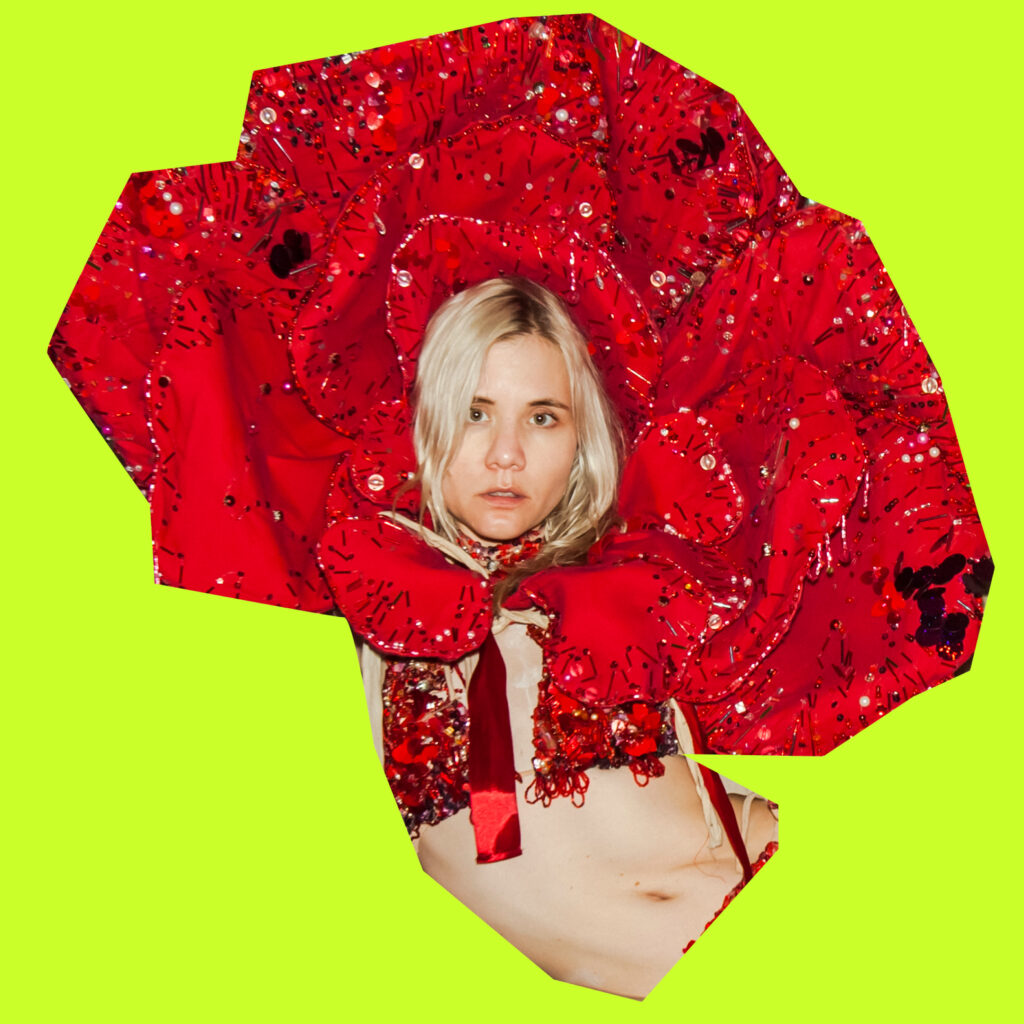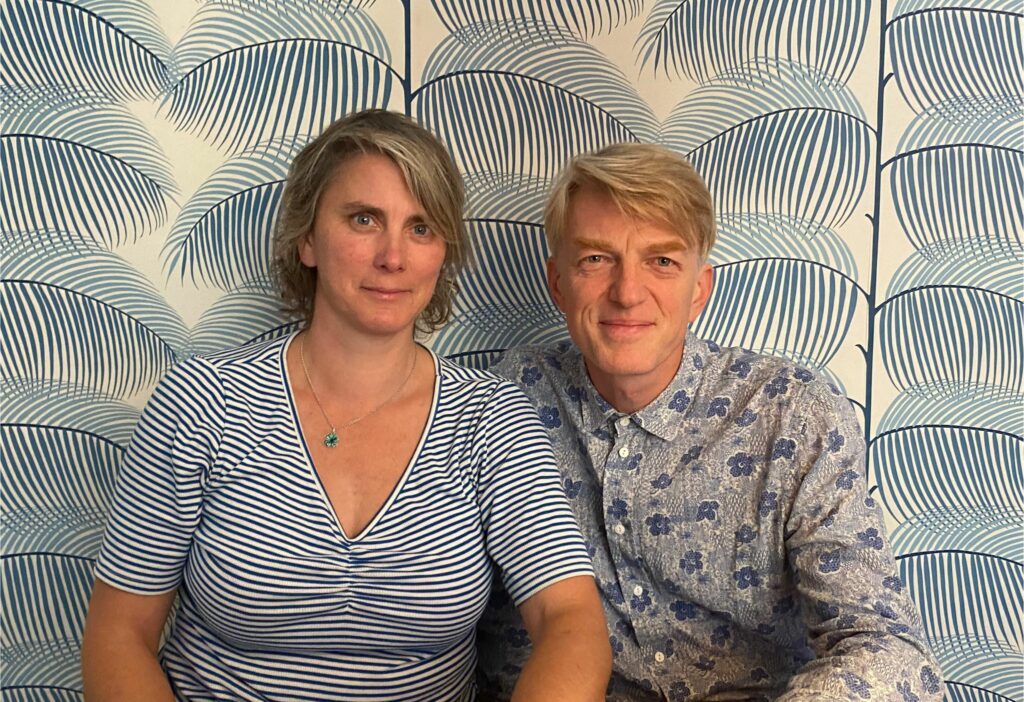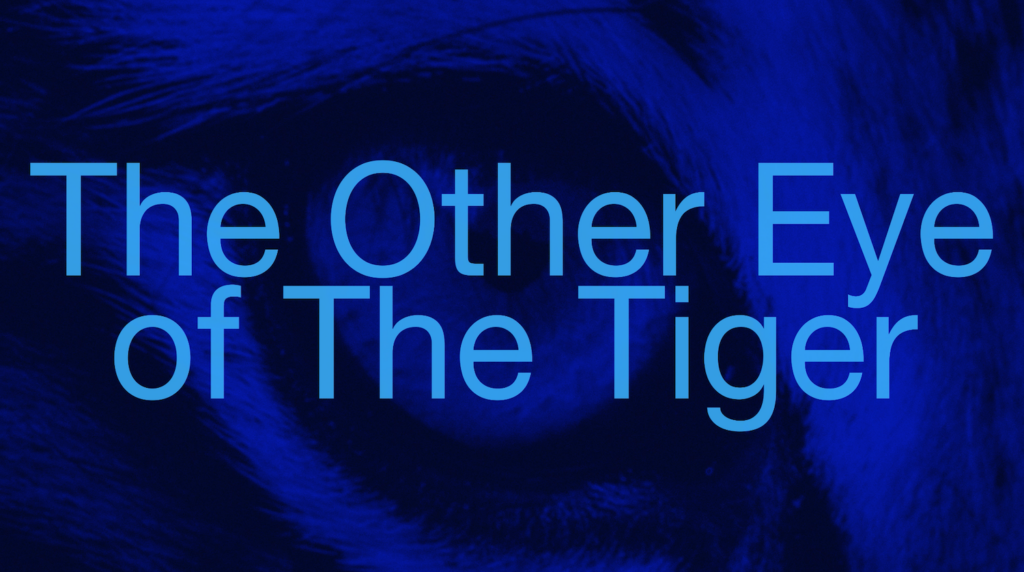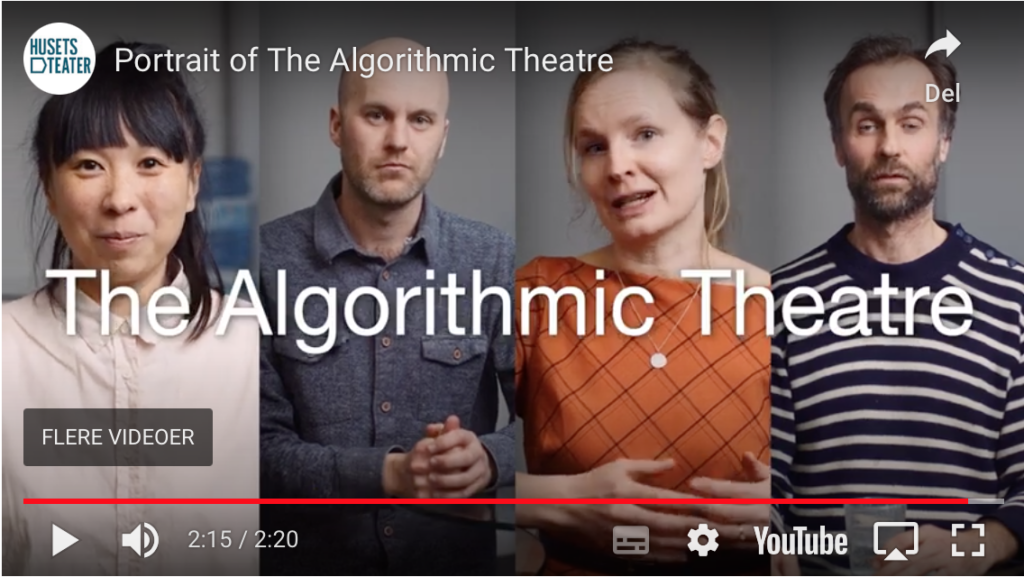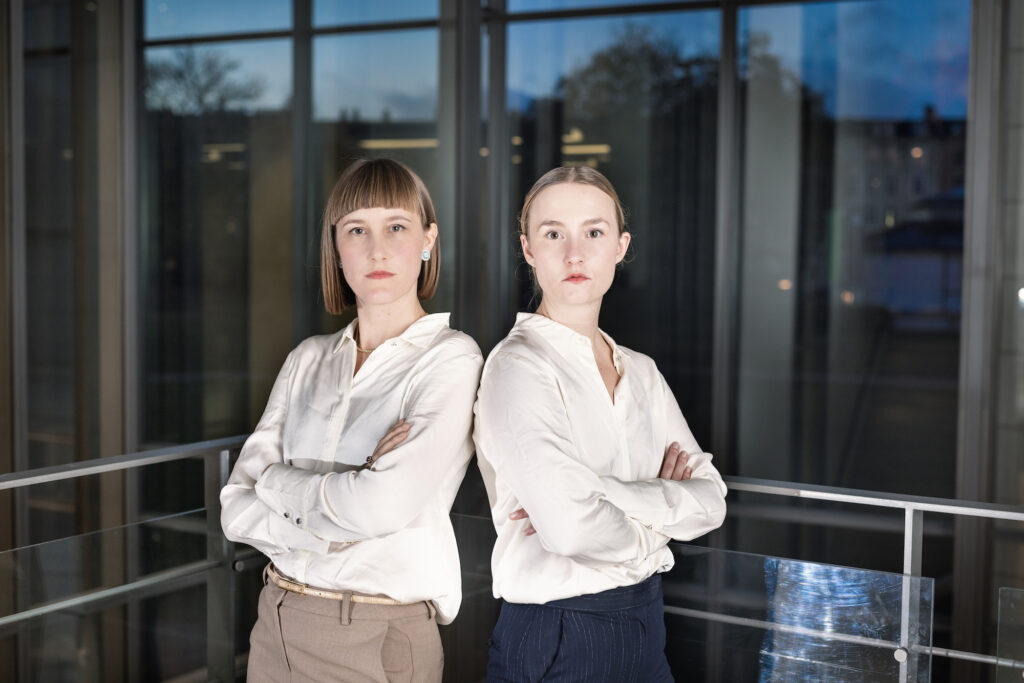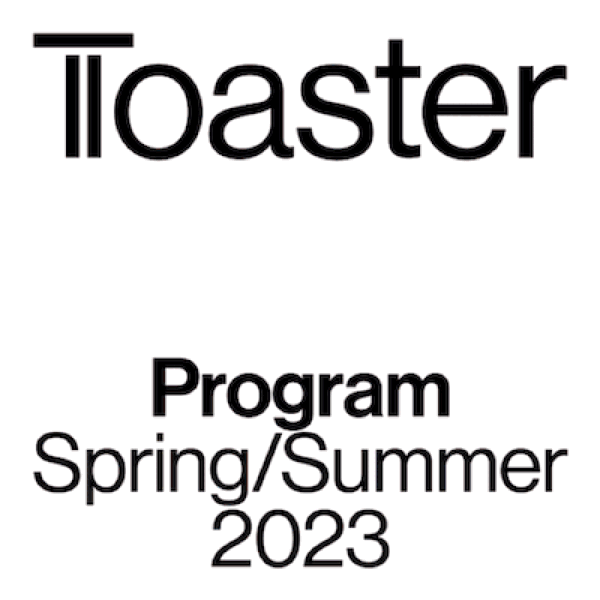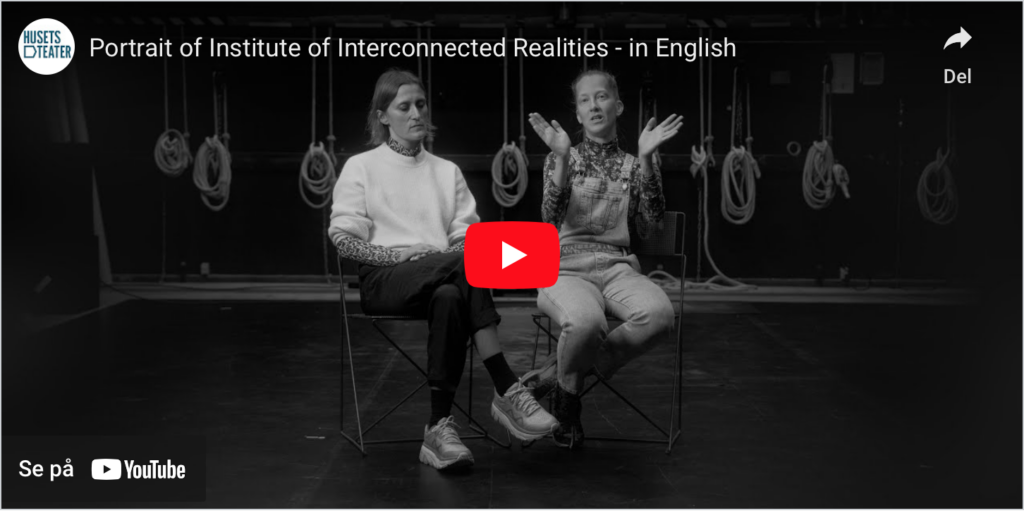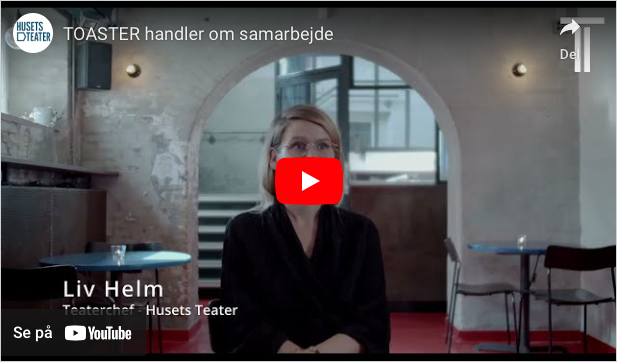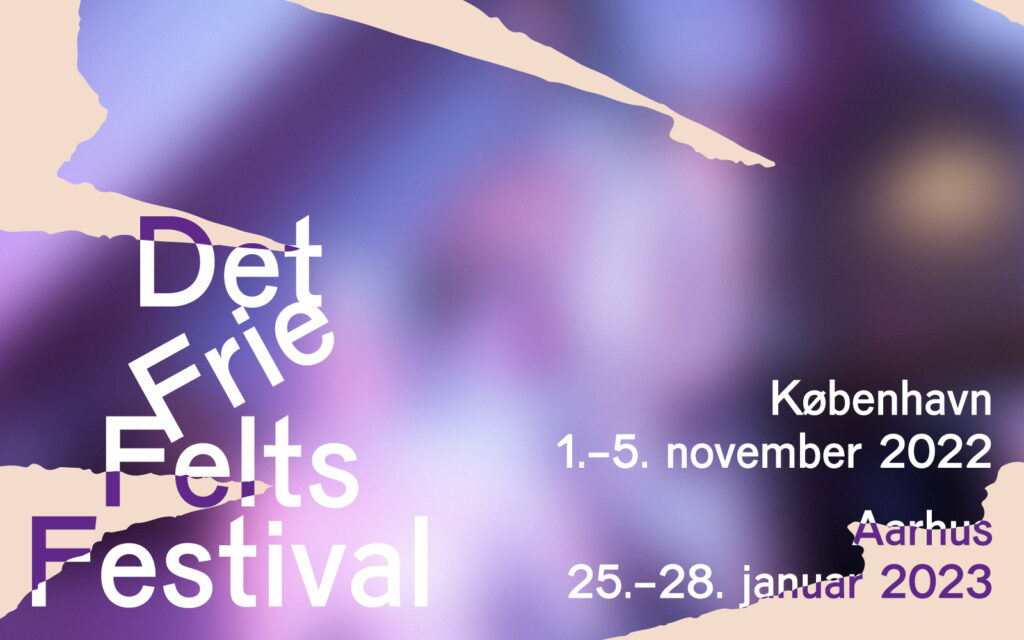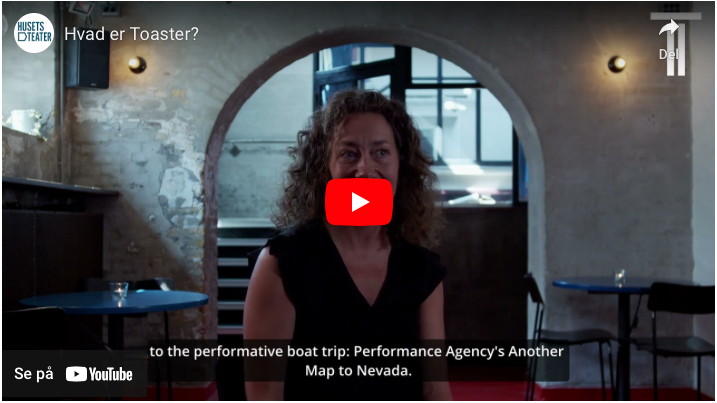Interview with Hestnes / Popović by Miriam Frandsen
Translated by Pernille Kragh
Toaster’s resident artistic duo Hestnes / Popović, consisting of Danish set-designer Freya Sif Hestnes and Norwegian/Bosnian actor Marina Popović, premiered SO FAR SO GOOD in Trondheim at the Norwegian Rosendal Theatre in November 2022. Now the performance is moving in to Husets Teater to be played in English in a slightly adjusted version. The set-design has been adapted to a whole new space, Marina has in the meantime become pregnant and needs a new costume and needs to learn the text anew in English. Hestnes/Popović’s working method is exploratory and investigative, so they can’t help them selves but ask new questions of their work and thereby continually develop the performance. In the work with theatre and performance, as opposed to other more static art forms such as literature and visual arts, it’s a basic artistic experience that we only make temporary full stops. “So far so good” contains precisely the relief of having successfully overcome something “dangerous”, but at the same time harbours the awareness that the journey continues.
I meet with Hestnes / Popović for a conversation about their working method and the performance SO FAR SO GOOD.
Who is Hestnes / Popović? And what is your shared biography?
Hestnes / Popović: We’re a performing arts duo educated at the Norwegian Theatre Academy in Fredrikstad at set-design and acting, respectively. We both have an interdisciplinary background, as Freya is also educated as a visual artist and Marina holds a Master in Cultural Memory Studies (European Studies) from Trondheim.
We’ve made three productions together in total. The first was created when we were still in school and was called THERE IS A NOISE and it has been touring ever since, the other, A MOMENT OF SILENCE, premiered in 2019 and was a stationary performance created for the Rosendal Theatre. SO FAR SO GOOD is our third performance and this time it’s an international co-production between Rosendal Theatre and Toaster. Apart from that we both have independent careers.
We’ve found a mutual interest in the documentary, autobiographical and historical material. It’s a performing arts language we investigate together and it has given us a form of practice that we cannot unfold anywhere else. A practice created through the years and also in between individual productions, where we develop ideas together through longer research periods. All our performances arise from a continuous artistic investigation. Together we can allow ourselves to do what we want, and are “only” responsible for one another. We expect to challenge each others ideas, but it’s a safe place to be, where we trust that even our bad ideas can have some space and get picked up. The basic trust makes us more courageous.
With that being said, being a independently producing duo is a precarious situation, because we are responsible for everything ourselves. Maybe that is why we’ve only produced three performances up till now, because for every new production we have to both create the structure and find the finances necessary. The positive part of being independent producer is, that we’ve been able to use our good cooperation with each other and various venues to learn a lot about organization and have been able to examine how you design a good process.
What is the artistic motivation for making SO FAR SO GOOD? How did the idea come about?
Hestnes / Popović: The idea sprung from our latest performance. Our themes in all three performances are in a way connected. They weave in and out of each other, and there’s always some things that there is just no room for or that are a cause of extra curiosity, and we then continue working with that in the next performance. So it arises very organically out of our continuous examination of our history and identity. In A MOMENT OF SILENCE we among other things examined political rituals, and there was a story in that performance about believing in omens, that is, the superstitious aspect that if you believe something will happen, you run the risk of it happening. The story was about a woman from the south of Jutland, who foresaw the Reunion already in the 19th century. She gave an omen that eventually ended up coming true and was even used politically, as Christian the 10th rode into Southern Jutland on a white horse, that had been further whitewashed to make it shine the whiter, to fulfill her prophecy. And then there’s our personal backgrounds of Bosnia and Denmark, respectively, where we’ve been raised with different rituals, sayings and admonitions about what to do, to steer clear of accidents.
So we started with wanting to examine omens and forewarnings, but many of the rituals we’ve created collectively in our society are about warding off evil, so that’s the trail we’ve kept following. Also because it resonates with us, personally. We work more with feelings in our themes, than with clear political statements that relate to a contemporary context. It’s more the basic human anxiety we’re trying to embrace. And at the same time that maybe be placed in a very contemporary context – because anxiety holds such a major place in society right now.
We’d like to use the community presented by the theatrical space, to share our sense of what is happening in the world and to try and draw people into that investigation.
What are the parameters that most interest you in the performance (set-design, lighting, sound etc.)? What did you want to examine?
Hestnes / Popović: We have a very non-hierarchical approach to all parameters in a performance. Not one thing is more important than the other, and all elements carry the performance with their own independent voice and not just as a backdrop. Out text material, which is where we begin, springs from science- and experience-exchanges. We interview each other and others. We tell each other stories and re-write them. For the first time in SO FAR SO GOOD we differentiate between stage and auditorium, where in previous performances we created a stage that both the audience and the performer were a part of. Sound is also a big part of this performance, but it’s actually always been a very active element in our works. We wanted to try and give it even more space this time, so we invited Daniel Fogh onboard as sound designer. That resulted in us collectively developing the concept for the set-design, where the thoughts on sound created the premis for the rest of the space.
What kind of audience interaction are you working with? And why would you like to interact with the audience?
Hestnes / Popović: The interaction we have with the audience is connected to the community; that together we form a mini-society in the theatre. We’re not aiming to include audience interaction, but it happens because we’re very interested in creating a community. It provides our audience with a different sensory experience. They’re not just sat in the dark, watching, but have often participated in a ritual, where you get something to eat. In our first performance they were sitting around a large table, eating waffles. In our second performance the audience begin as bystanders, but then the space dissolves and we create a “sønderjysk kagebord” (ed. a traditional table set with a big spread of cakes and pastries, served with coffee) and they end up in a big sing-along. It comes about in an organic way because we want to get up close to the audience, so it grows from the rituals we’re examining and working with. Every performance is to us a happening of its own – a party in its own right – it’s not traditional theatre in that sense. Because it isn’t just the audience meeting the art, but also us meeting the audience. There’s an element of chaos, something that can’t be foreseen or controlled. It’s really interesting to work with.
As audience members, we often ourselves hate interaction, so for us as artists it’s all about creating spaces, where you feel comfortable about taking part, and where there’s room for the audience in a safe space. We tell ourselves we’d like to take part in our own performances, because you’re involved as a group and not as an individual. Our performing arts language is also performative, we’re present with the audience and not inside a fiction. The audience needs to have the liberty to withdraw, you’re allowed to join in, not required.
What would you like to make the audience think about with SO FAR SO GOOD?
Hestnes / Popović: That we need these places of gathering. We’ve been wondering about what rituals we’ve inherited and how we use them today. What little precautions we employ in our daily lives to ward off “evil”. So we examine our identities and the stories we carry on telling, so as to question if it is really the identity we want to have? To change something, we must first be aware of it, otherwise you act automatically.
All of our society offers a sea of new rituals to fight anxiety. But what’s resonated the most with us are the rituals we’ve inherited, that have been passed down the generations of our culture and that we merely reproduce without thinking much about it. We’d like to make the audience aware of the symbolic acts which we surround ourselves with.
What will the next natural experiment be for Hestnes / Popović following this performance?
Hestnes / Popović: Freya had a dream last night about us making a performance in which we gathered a lot of firewood and created a giant bonfire in a field. Maybe it could be a new interpretation of St. Hans (ed. St. Hans is the Danish celebration of solstice, linked to St. John or “St. Johannes”, Hans for short, as a celebration of his birth which was allegedly on June 24th. It includes gatherings around big bonfires all over the country. There’s a “burning of the witch” tradition – although this particular part of the ceremony is heavily disputed these days – there’s sing-alongs and bonfire speeches) under the artistname Hexnes/Popowitch? Haha.
At the moment we’re also examining what the collective writers room can do? We’d like to open up to others, but at the same time hold on to our own language, our method. We work very intuitively and how do you share that with others? So we work in longer periods and with different types of processes and will keep examining what the collective space can do: what if the sound designer is also the set-designer and the set designer is also a performer? What can happen when you come with a completely different perspective and enter into each others professions?
We conclude the interview, so far so good. Hestnes / Popović continue their examinations both on stage with the audience, but also in the form of long processes where they invite other artists to take part. I rejoice at the performative take on the theatrical space, at the same time as maintaining the performance as a shared, collective experience that both engages us in our culture and are being drawn into question.

